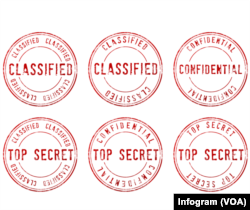And now, Words and Their Stories, from VOA Learning English.
Up and down. High and low. These short words describe more than just directions. They also connect to our feelings and experiences. In this episode of Words and Their Stories, we’ll start down low and end up high.
Many cultures around the world connect the words “low” or “down” with something negative. This is because our minds can easily connect low places, like the floor or the ground, with dirt.
So, when someone asks, “How low can you go?” they are expressing their opinion that another person’s behavior is bad in a moral or ethical sense.
If you are down and out, that means you are poor, without enough money for the things you need.
And if you are down in the dumps, that means you feel unhappy or depressed.
Next, let’s look at two “down” expressions that relate to either getting or keeping information. They sound similar but have different meanings. The following exchange uses one of these expressions:
A: So, did Maria tell you anything?
B: She did! But keep this on the down-low—she’s going to quit her job next month.
A: Oh my gosh! Wow—that is big news.
B: I know, but she doesn’t want anyone else to know.
A: No worries. I’ll keep it on the DL.
To keep something on the down-low means to keep information secret. Speakers often say the shortened form, “on the DL,” when using the expression.
On the other hand, if you want the low-down on a situation, that means you want to get the information. For example:
A: Did Jane give you the low-down on the budget?
B: Yeah. She said they can’t afford to do a summer project this year.
So, getting the low-down means you are getting information. Keeping it on the down-low means you are keeping information away from people.
Moving up
Now, let’s move up to a few expressions with “high.”
Imagine you are driving in an area with a lot of traffic. You see a car waiting to turn onto your street, so you stop and let that car make the turn. But this makes the car behind you slow down. The driver of this car now honks the horn for a long time, leans out the car window, and shouts at you.
At this point, you have a choice. You can also shout in return, or you can take the high road and not answer. To take the high road means to behave in a way that is morally correct, even when other people around you are not behaving well.
Our next expression relates to time. Sometimes there are things that people should do, but they wait longer than necessary to do them. By waiting, they sometimes create problems or make things worse.
In these situations, we can use the phrase “it’s high time” to say that people have delayed doing something for too long.
For example, someone can say, “It’s high time you cleaned up that apartment. It is so dirty!”
Next, we look at the word highfalutin. If you say someone is highfalutin, that means you think the person is overly fancy or pompous. Highfalutin is usually a negative way of referring to ways of speaking and behaving.
According to Merriam-Webster’s Dictionary of American English, the first known use of this word was in 1839 in the United States.
Finally, you can end on a high note by connecting to another Words and Their Stories program. There, you can learn more expressions about highs and lows.
Then, give yourself a high-five for reading and listening to this week’s Words and Their Stories.
I'm Andrew Smith.
Andrew Smith wrote this lesson for VOA Learning English.
____________________________________________________________________
Words in This Story
negative –adj. not good; the opposite of positive
honk –v. to make a loud sound often with the horn of a car
fancy –adj. uncommon, costly, or fashionable
pompous –adj. behaving in a way that appears to show a person thinks they are better than others
____________________________________________________________________
We want to hear from you. Do you have a similar expression in your language? In the Comments section, you can also practice using any of the expressions from the story.
We have a new comment system. Here is how it works:
- Write your comment in the box.
- Under the box, you can see four images for social media accounts. They are for Disqus, Facebook, Twitter and Google. Click on one image and a box appears.
- Enter the login for your social media account. Or you may create one on the Disqus system. It is the blue circle with “D” on it. It is free.
Each time you return to comment on the Learning English site, you can use your account and see your comments and replies to them. Our comment policy is here.












Forum